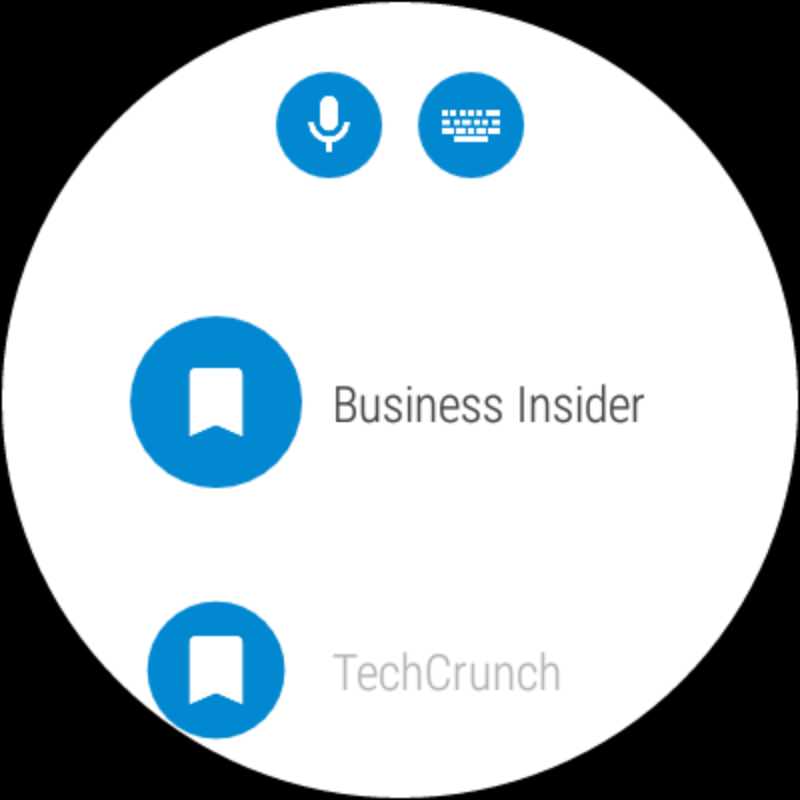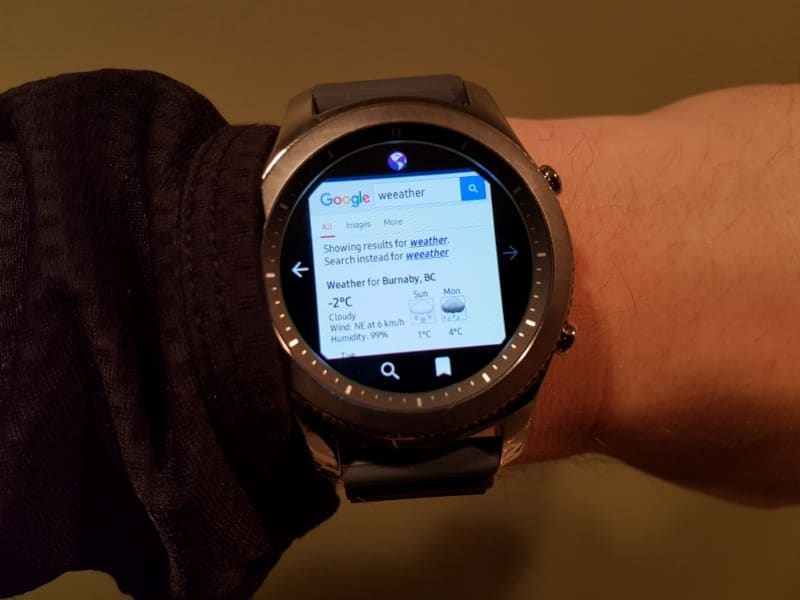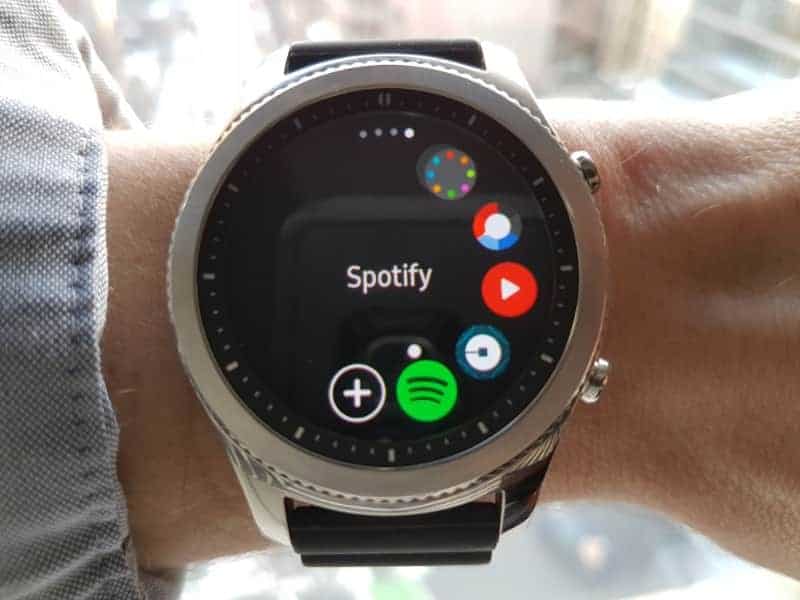The Fitbit Sense is a fantastic smartwatch but you can get very good features and even better value with the Ticwatch E3.
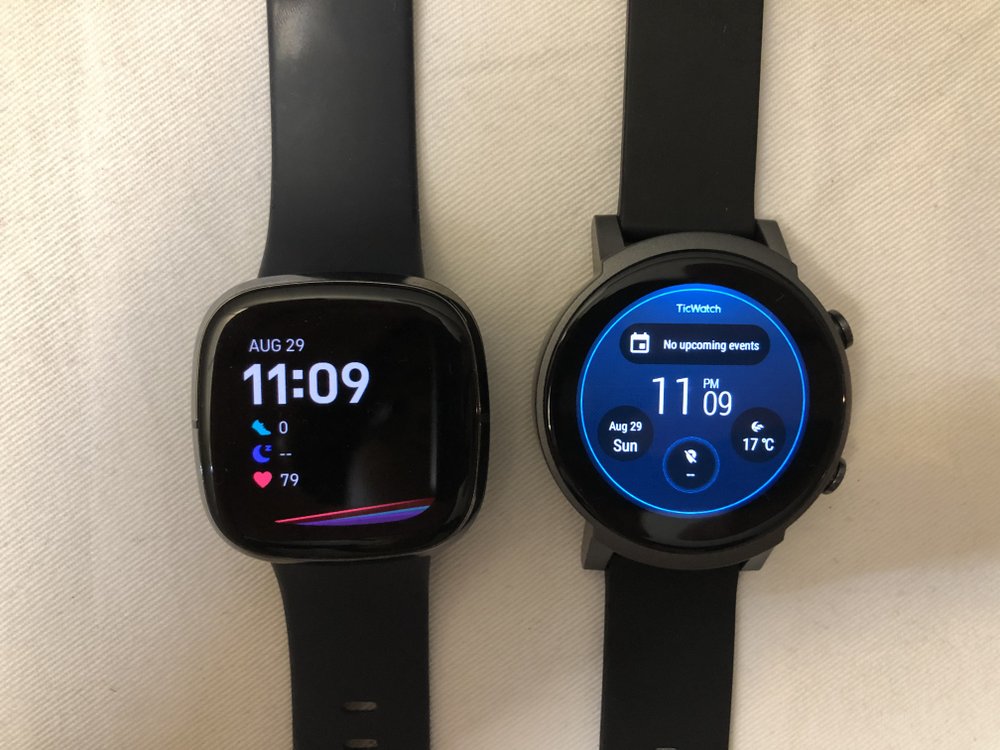
Mobvoi’s Ticwatch E3 is a pretty epic watch. I love it.
However, before the Ticwatch E3 came out, I also really liked the Fitbit Sense.
I still do, but I think times have really changed.
When the Ticwatch E3 came out, I was just blown away with the quality and features you get for something at this price point.
The Fitbit Sense is not too far off in price, and it has several advantages over the Ticwatch E3.
Size and design
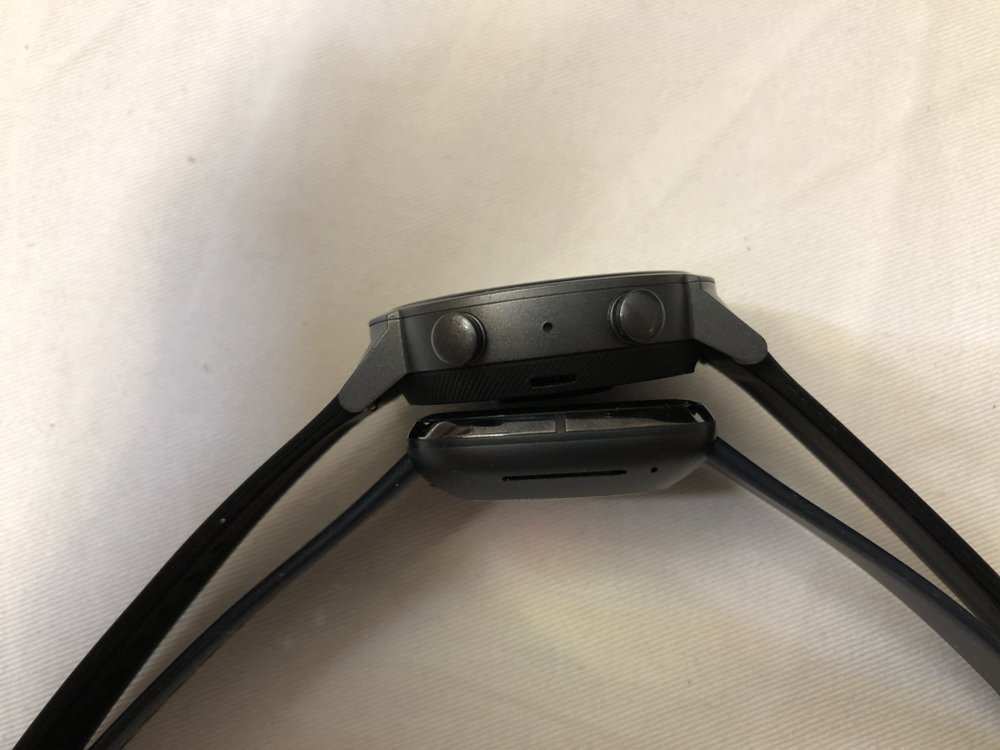
The Ticwatch E3 is a larger smartwatch both in thickness and in length and width.
You’d be shocked to hear this but the Fitbit Sense might be smaller, but it packs a similar range of features in its compact shell.
That’s pretty amazing.
I think the Fitbit Sense also has a much more “modern” look. In a sense, it’s flatter, it’s curvier (curved edges and rounded glass edges) and it has a much shinier appearance because of its reflective materials.
Whereas the Ticwatch E3 is matte. If you like that, that’s good too.
So, both smartwatches have a sleep tracking feature and the design really matters because if you’re going to wear a smart watch over night, you are going to need to have one that’s comfortable.
I’d say both smartwatches are equivalent in terms of how comfortable they are. I mean, the Ticwatch E3 is great but the Fitbit Sense is even better.
The Fitbit Sense has a curved rear which means that you don’t feel a concentrated pressure point when you apply weight on your wrist.
It’s not that bad on the Ticwatch E3 but it’s a bit worse because of its protruding heart rate/blood oxygen sensor.
Features
Boy oh boy. When Fitbit released the Sense, it was a far cry of what it is now.
The big change here is that Google bought Fitbit, and so while that probably means more of your personal data is getting funneled to Google, it also means that you get some great Google features.
To add to that, an update also unlocked the voice calling features on the Fitbit Sense.
It annoyed me a little to know that the Fitbit Sense had these features but they were locked. But perhaps I should see it as Peter Parker discovering he’s Spiderman.
Truly, these changes have made competing with the Ticwatch E3 much more difficult.
Let’s start with the features that matter.
Google Assistant

Fitbit recently got Google Assistant and that has made all the difference.
In the past, it had Amazon’s Alexa. That was not as good as Google Assistant.
Whereas the Ticwatch E3 has always had Google Assistant.
I am so glad that Fitbit has Google Assistant now. It’s great. You can ask it anything and it will find better answers or do a task that Alexa wouldn’t have.
The Ticwatch E3 also has eliminated one of the biggest gripes I have with Google Assistant. In the past, the older Ticwatch Pro and second-generation (E2, S2, etc) watches have been terrible. You’d long press to get Google Assistant but you’ll have to wait a while before Google is ready to take in your voice.
Not anymore. With the Ticwatch E3’s powerful Qualcomm Snapdragon Wear 4100 (the latest and fastest), activating Google Assistant takes no time.
Essentially, the recent update has closed the gap between the Fitbit Sense and the Ticwatch E3.
Battery Life
Battery life is much better with the Fitbit Sense than with the Ticwatch E3. The Ticwatch E3 is a watch that you’d have to charge daily and that’s annoying.
Whereas the Fitbit Sense can last multiple days without running out of battery.
Obviously, the Fitbit Sense can be drained to nothing if you continuously use features that hog the battery like its internal GPS. But if you did the same to the Ticwatch E3, it’ll run down its battery much faster.
The reason why it really sucks when you have to charge daily is because you’d have to be without your watch for a while and you’ll probably do it when you go to bed.
That means that you’re less likely to be tracking your sleep on the Ticwatch E3 than the Fitbit Sense, since the former requires frequent charging.
Phone calls
This is important. When Fitbit unlocked the Fitbit Sense’s ability to make phone calls, I was thoroughly amazed.
The Fitbit Sense is probably the smallest smartwatch out there with the ability to answer phone calls. It’s only beaten by the Apple Watch Series 6.
However, one big differentiating factor between the Fitbit Sense and the Ticwatch E3 is the fact that the Ticwatch E3 can make outbound phone calls.
On both smartwatches, you need to have your smartphone nearby. It works perfectly fine with my Samsung Galaxy.
Sound quality on both is just OK. It’s really convenient when you’re out doing something and don’t want to take your phone out. Perhaps you’re at the beach or doing some activity and your phone is tucked away.
They’re really meant for short calls. Extended calls will have you reaching for your phone.
Fitbit app vs Mobvoi app
Fitbit has an app which is getting better and better, but it suffers from connection issues.
I remember how it took me so many restarts and resets just to get the Fitbit to connect to the Fitbit app.
It’s always a weak link because all data has to go through the Fitbit app before it reaches your watch.
That means you can have moments where things aren’t synchronized because there’s some error on the Fitbit app.
On the other hand, the Ticwatch E3 depends on Mobvoi’s companion app and an overarching Google one: the Wear OS app for smartphone to smartwatch connection and the Mobvoi app as a data store for Mobvoi’s health and sports apps.
The Wear OS app is much more reliable than the Fitbit app.
However, when it comes to using Fitbit’s app vs Mobvoi’s app, the Fitbit app is much more comprehensive as a fitness tracker. For one, the design is much better and the number of data points they track is much more comprehensive.
I liked how I could track my nutrition in the Fitbit app. That’s not possible in Mobvoi’s app.
Pulse Oximeter
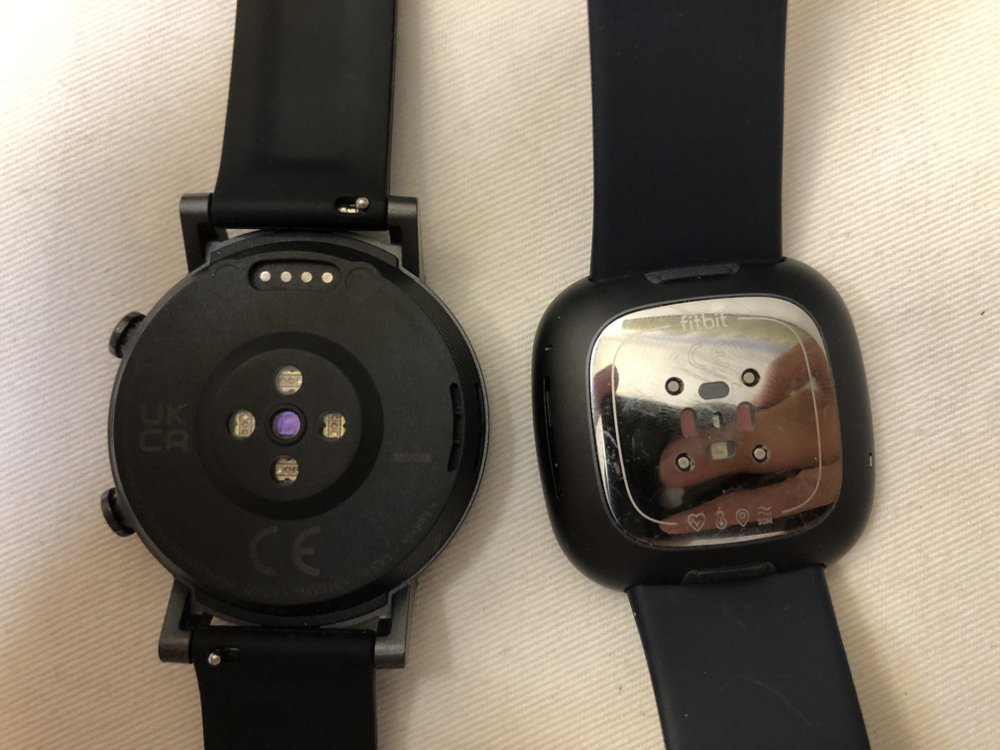
Both smartwatches have a SpO2 sensor (aka pulse oximeter) that measures your blood oxygen level. In other words, the oxygen level in your blood.
On the rear of both watches, alongside the heart rate monitor are red LEDs that are used to measure this figure.
On the Fitbit Sense, you get this reading by using a special watch face that gets this reading overnight. On the Ticwatch E3, you can use the TicOxygen app to get your blood oxygen saturation reading anytime.
Messaging and emails
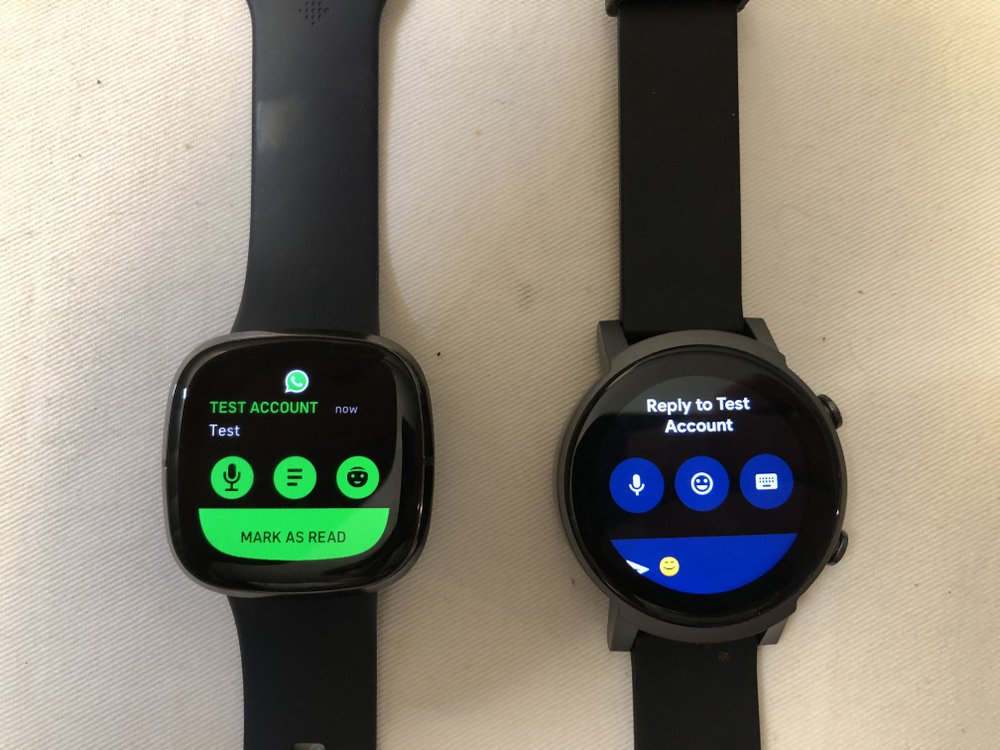
Both watches can handle messages and emails.
When you receive a message on your phone, you will get these notifications reflected on both the Wear OS smartwatch and the Fitbit Sense.
Unless you’re using an iPhone, you’ll be able to reply to them using a few methods. The only methods worth mentioning are the pre-composed message replies or the speech to text replies.
The quality of speech to text replies are high and that’s good. The only difference here is that the Ticwatch E3 allows you to correct mistakes with an on-screen keyboard.
Sports

OK, one of the bigger reasons why I would wear a smartwatch is to keep track of my health and sports stats.
That’s important to me because I like to keep a healthy lifestyle.
After I got a smartwatch, I really enjoyed knowing how much calories I burned, how far I went, my route and other statistics like speed.
The experience on both smartwatches are a bit different. Both have their own proprietary app that tracks your workouts.
On a typical Wear OS watch, you’ll have to use Google Fit. Google Fit is good because it’s portable from watch to watch and has many activities you can choose from.
Both Mobvoi’s TicExercise and Fitbit Sense’s Workout app don’t really have the big breadth of workouts and sports that Google Fit has.
That kinda sucks.
The good thing with the Ticwatch E3 is that you can choose not to use TicExercise. You can just go straight to Google Fit as it’s a default program.
And unlike the Ticwatch Pro 3 GPS flagship watch, you don’t lose some features (such as displaying your exercise stats on a secondary display that’s battery saving).
Whereas on the Fitbit Sense, you’re stuck using its default fitness tracking app. That’s OK if you are a person who just does biking, running or swimming.
On the other hand, you’ll also find that if you are a person who does less common sports, you’ll end up running out of suitable exercises to use.
Health tracking
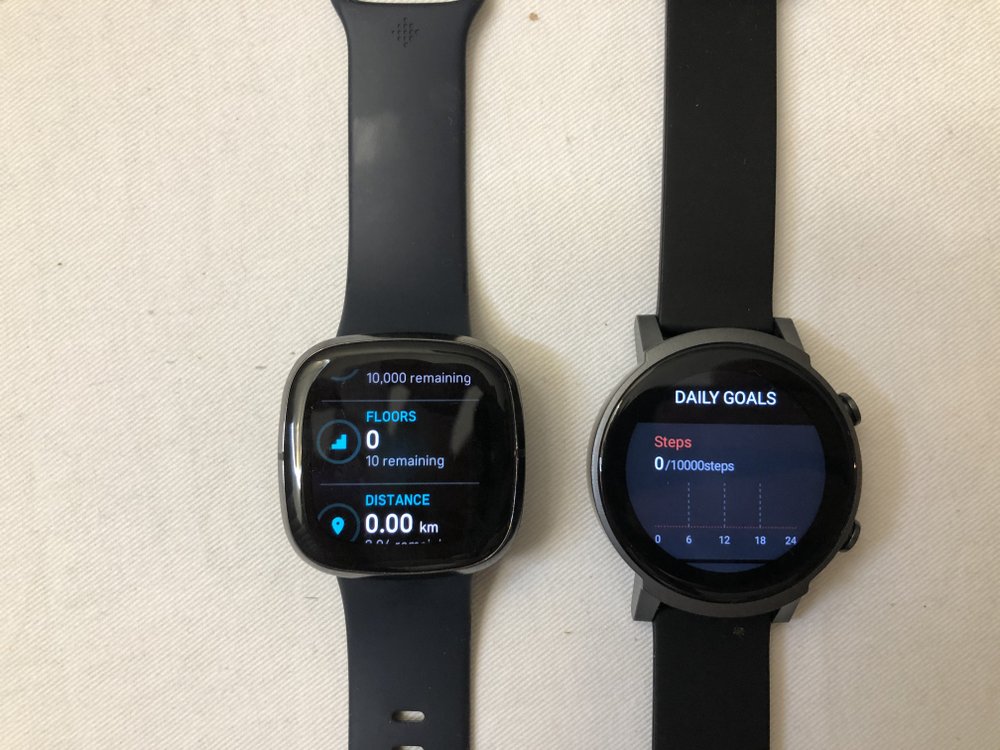
The health tracking features of the Fitbit Sense are comparable to the Ticwatch E3.
For stress, both watches have their own stress measuring app. The Fitbit Sense goes one step further with by checking your electrodermal responses.
We’ve already talked about the blood oxygen readings…
The Ticwatch E3 has a app that measures the ambient noise levels. It’s pretty useful but unlike the Apple Watch, it’s not a passive app that runs in the background and alerts you if you are in a noisy environment.
Better than the Fitbit Sense, I suppose, which has no such features at all.
There are some features on the Fitbit Sense that don’t exist on the Ticwatch E3, though.
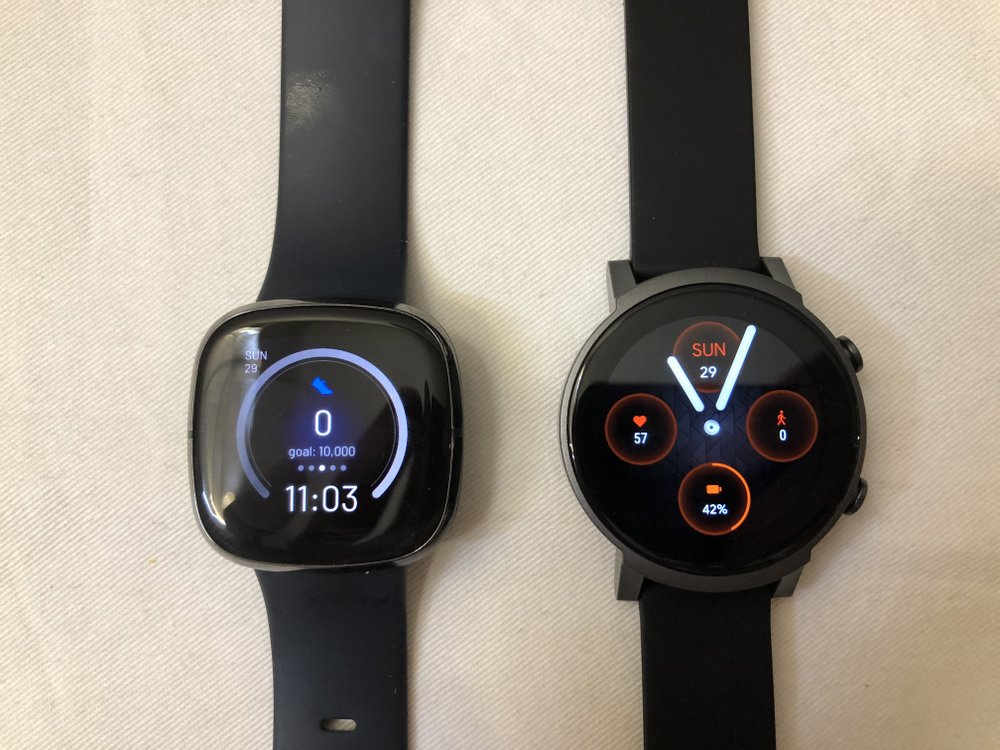
Verdict
The truth is that the Fitbit Sense is an amazing smartwatch and no one can take that away from it.
The Ticwatch E3 came onto the market much later than the Fitbit Sense, but it’s absolutely amazing.
It just offers great value for its price and it also offers so many features that make it an amazing watch.
The Fitbit Sense, though, is a marvel of design and beauty. With the new updates, the Fitbit experience has been significantly enhanced.
So it’s a great watch, but you’d still get better value with the Ticwatch E3.

